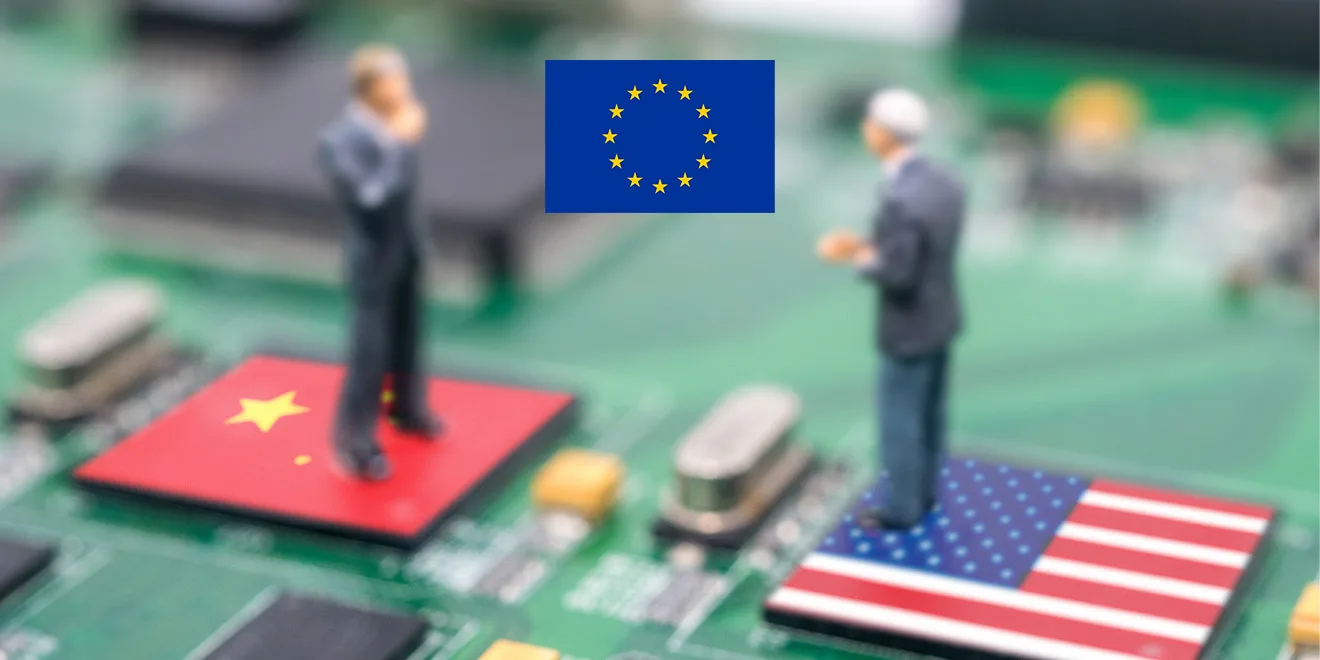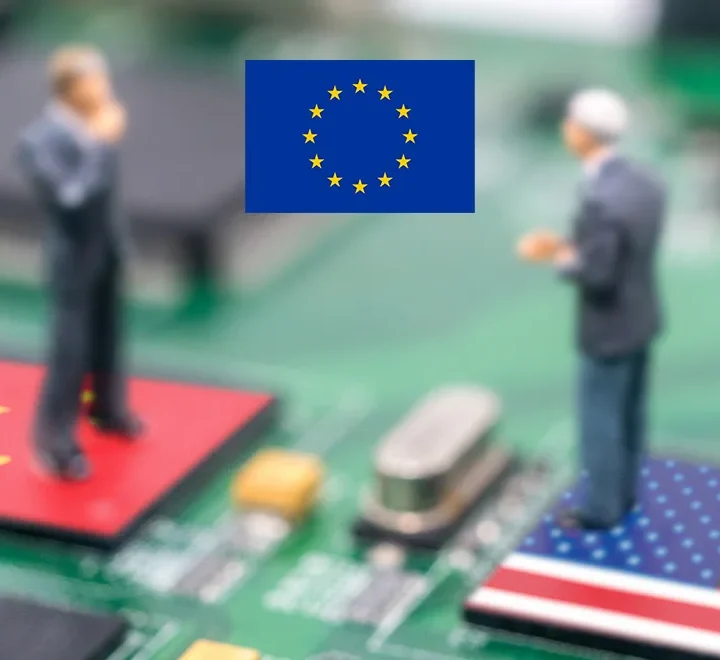For decades the digital world has largely been shaped by a handful of global titans: U.S. hyperscalers that own most of the cloud stack, chip firms concentrated in a few countries, and large AI players whose models set the standard. Europe has watched this landscape with growing unease. Dependence on foreign providers leaves critical services — from public administration to defense, healthcare to manufacturing — exposed to geopolitical risk, supply-chain disruption, and policy choices made abroad. The continent’s response isn’t isolationist; it’s strategic: build control and resilience across the digital stack, from sovereign cloud services to domestic semiconductor capacity. Here’s how Europe is approaching that challenge, and what stands in the way.
A layered problem demands a layered response
Europe’s vulnerability is structural. Cloud infrastructure, data storage, and major AI models are dominated by firms headquartered in the U.S.; most advanced chip design and manufacturing sits in the U.S., Taiwan, South Korea, and a handful of other locations. That concentration creates single points of failure and gives non-European actors outsized influence over regulation, access, and pricing.
Rather than repeating past models of import dependence, the strategy emerging in European capitals is multi-pronged: reduce reliance by creating credible alternatives; regulate to protect citizens and markets; invest to scale up domestic capabilities; and coordinate policy across nations to avoid fragmentation.
Pillar 1 — Sovereign cloud and data infrastructure
At the foundation of digital sovereignty is control over data and the infrastructure that stores and processes it. Europe’s approach mixes public procurement, standards, and partnerships aimed at creating European cloud alternatives that meet strict data-protection and interoperability rules.
Key elements include the promotion of federated cloud initiatives that emphasize trust, portability and user control; incentives for private firms to host sensitive workloads on European infrastructure; and technical standards that make switching providers easier. The goal is not to shut out U.S. providers entirely — doing so would be costly and impractical — but to ensure critical services and sensitive data have European options that comply with EU rules and are resilient to external pressure.
Pillar 2 — Onshoring semiconductor capacity
Chips are the literal heart of modern electronics. Europe’s chip strategy focuses on two tracks: strengthening local design and supporting semiconductor fabrication capacity. Historically, Europe has been strong in chip design and equipment, but less so in leading-edge foundry capacity. Policymakers are now leaning into public-private partnerships, subsidies, and cluster development to attract manufacturing and to secure supply for industries ranging from automotive to defense.
Beyond raw manufacturing, the strategy also includes diversifying technology bases (for example, supporting RISC-V and other open hardware approaches) and ensuring supply-chain resilience for key materials and equipment.
Pillar 3 — Rules, standards, and trust
Regulation is a tool and a competitive advantage. Europe’s regulatory playbook aims to simultaneously protect rights (privacy, consumer protection, safety) and create market conditions where European alternatives can thrive. Strong rules on data portability, interoperability, and algorithmic transparency raise the cost of lock-in and create space for new entrants. Meanwhile, frameworks for AI safety, procurement rules, and certification schemes create predictable markets for trustworthy European products.
Crucially, regulation can also become an exportable asset: firms that build to strict European standards may find their products attractive in other regulated markets.
Pillar 4 — Funding, scale and talent
Technology doesn’t flourish on policy alone. Europe has increased public funding for chips, cloud projects, AI research, and deeptech commercialization. Investments aim to de-risk big capital projects and to seed innovation clusters that can attract talent and follow-on private capital.
Talent is the other bottleneck. Europe’s universities and research centers are strong, but competition for top AI and chip engineers is global. Strategies include boosting STEM education, streamlining visas for specialized workers, and building industrial R&D partnerships that let talent work on cutting-edge problems at scale.
Pillar 5 — Collaboration not fragmentation
Europe’s multiplicity of nations is both a strength and a pitfall. Cross-border coordination is necessary to pool capital and market size; isolated national efforts risk duplicating work and failing to reach the scale needed to challenge global incumbents. Hence, pan-European programs and funding mechanisms are essential to create “European champions” while respecting the single market’s rules.
Real-world building blocks
This strategic mixture — regulation, funding, standards, and procurement — has practical manifestations: federated cloud initiatives that allow domestic clouds to interoperate; public-private foundry projects or incentives to attract fabs; certification regimes for trustworthy AI; and collaborative R&D programs in quantum computing and advanced materials.
Smaller firms and startups benefit when governments act as anchor customers for trusted services. Large-scale procurement by healthcare systems, transport authorities, and public institutions can create the early demand needed to scale domestic alternatives.
The headwinds: money, time and geopolitics
Europe’s strategy is sound in principle but faces three major challenges.
First, cost and capital intensity. Building fabrication plants or cloud regions requires enormous upfront investment and long payback periods. Europe must find ways to attract global private capital while using public funds strategically.
Second, speed. Technology moves fast. Regulatory processes and consensus-building among multiple governments can be slow — and slow responses risk ceding ground to faster, well-capitalized foreign players.
Third, geopolitical interdependence. Chips and clouds are embedded in global supply chains. Europe can diversify and build capacity, but full independence is neither realistic nor desirable. The aim is resilience and choice, not autarky.
What success looks like
Success won’t mean Europe has replaced the major U.S. or Asian tech firms overnight. Instead, it will be measured by resilience: the ability of European governments, firms, and critical services to operate securely and competitively without being forced to accept unfavorable terms; by the presence of scaled European cloud and chip players; and by a thriving ecosystem where startups can scale across the continent.
In practical terms, that will mean more European data centers certified for sensitive workloads, domestic fabs supplying automotive and defense industries, AI tools built to European safety and privacy norms, and a regulatory environment that balances protection with innovation.
Conclusion — Strategic sovereignty, not self-isolation
Europe’s movement from cloud to chips is a recognition that digital power matters geopolitically and economically. The task is not to turn inward, but to construct a set of capabilities and rules that give Europe agency in a globalized tech order. With coordinated policy, targeted investment, and a pragmatic approach to partnerships, Europe can reduce risky dependencies and shape a digital future that reflects its values — privacy, competition, and technological resilience — while still engaging with the rest of the world.







